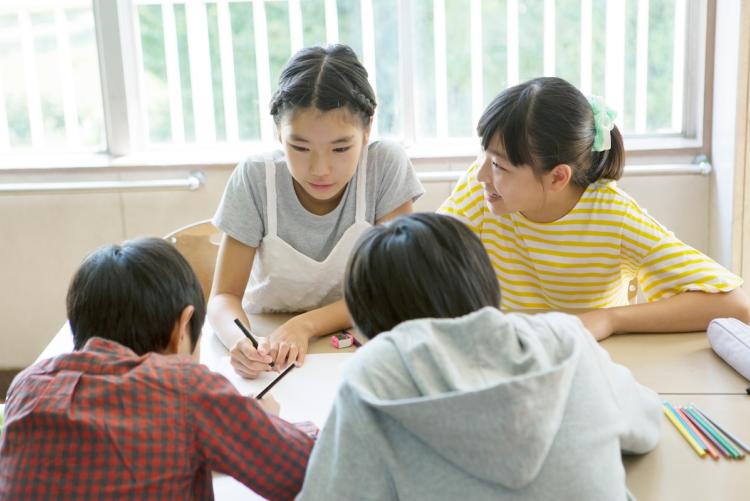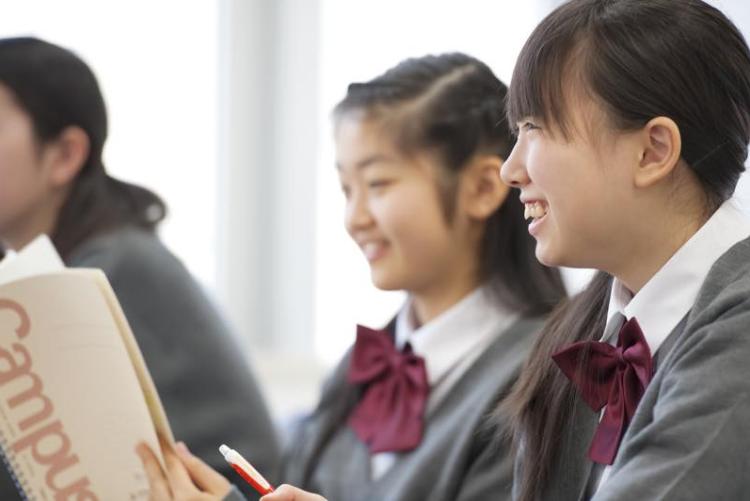When I first set foot onto the grounds of my international school, I didn’t realize I was entering a miniature version of the world. As I walked down the hallway, I couldn’t help but notice the flags on the wall of the students from every continent and country, representing the diverse nature of international schools. To my surprise, the cafeteria served chicken curry one day and Mexican tacos the next. The environment was chaotic but exhilarating. It was a place where everything and everyone came together.
国際学校の校門を初めてくぐった時、私はそこに世界の縮図が広がっているとは気づかなかった。廊下を歩くと、壁に飾られた世界中の国旗が目に入った。どの大陸、どの国からも生徒が集まる国際学校の多様性を象徴していた。驚いたことに、食堂ではチキンカレーの翌日にはメキシコ風タコスが振る舞われた。混沌としているが刺激的な環境だった。あらゆるもの、あらゆる人が集う場所だった。
I had grown up surrounded by Japanese culture, where politeness and classrooms are hierarchical—teachers lead, and students follow. In the international school, I found myself in an almost opposite environment. In the classrooms, people disagreed loudly, raising their hands not to answer but to challenge ideas. Students worked together on nearly every paper, learning together instead of alone. It was an unexpected, disorienting, and sometimes overwhelming experience. I couldn't help but think, how could there be such a different world while I was still in Tokyo? But over time, I realized that was the point. At an international school, you’re constantly learning how to think, not just what to think.
私は日本の文化に囲まれて育った。礼儀正しさが重んじられ、教室は階層的な場所——教師が主導し、生徒は従う。インターナショナルスクールでは、ほぼ正反対の環境に身を置いた。教室では人々が声を荒げて議論し、手を挙げるのは答えではなく、考えに異議を唱えるためだった。生徒たちはほぼ全てのレポートを共同で作成し、単独ではなく共に学び合った。それは予想外で、混乱を招き、時に圧倒される経験だった。東京にいたのに、どうしてこんなにも違う世界が存在するのだろう?と考えるしかなかった。しかし時が経つにつれ、それが本質だと気づいた。インターナショナルスクールでは、何を考えるかだけでなく、どのように考えるかを絶えず学んでいるのだ。
Academics were demanding, but challenging in unexpected ways. Instead of memorizing facts and studying for big finals, we wrote timed essays about climate change, debated political beliefs, and even designed experiments using class equipment. Schoolwork was broken into units, with tests covering our knowledge from the past month. Teachers wanted us to question everything. They wanted us to answer every question because international schools taught me that there are no wrong answers. Education was no longer about getting the “right” answer but understanding why something was right or wrong. To test our knowledge, we faced endless types of assessments: written tests, presentations, collaborations, videos…the options were infinite.
学業は厳しかったが、予想外の形で挑戦的だった。事実を暗記し期末試験に備える代わりに、私たちは気候変動について時間制限のあるエッセイを書き、政治的信念について議論し、教室の設備を使った実験さえ設計した。授業はユニットごとに分けられ、テストはその月の学習内容を網羅していた。教師たちは私たちに全てを疑問視することを求めた。あらゆる質問に答えさせることを望んだ。なぜならインターナショナルスクールは「間違った答えなど存在しない」と教えてくれたからだ。教育はもはや「正しい」答えを得ることではなく、なぜそれが正しいか、あるいは間違っているかを理解することだった。知識を測るため、私たちは無限の形式の評価に直面した:筆記試験、プレゼンテーション、共同作業、動画…選択肢は尽きることがなかった。
But life at an international school wasn’t all about academics. It was also about collaboration and respect. At club fairs, the courtyard was lined with booths and activity tables. From community service groups to sports clubs, music and art clubs, we were never divided; instead, we were always encouraged to unite. Sports and music weren’t just hobbies; they were part of who we were. Our teachers took time out of class to cheer from the sidelines, and our friends showed up for every performance. Everyone came from different parts of the world, and yet, all I felt at the international school was a sense of community.
しかしインターナショナルスクールでの生活は学業だけではない。協力と尊重も重要な要素だった。クラブフェアでは中庭にブースや活動テーブルが並び、地域奉仕団体からスポーツクラブ、音楽・美術クラブまで、私たちは決して分断されず、常に結束を促された。スポーツや音楽は単なる趣味ではなく、私たちのアイデンティティの一部でした。先生方は授業時間を割いて応援に来てくれ、友達は全ての公演に駆けつけてくれました。皆が世界の様々な地域から集まっていたのに、インターナショナルスクールで感じたのは強い一体感だけだった。
The mix of cultures could be confusing at times, but I also learned a lot about the world. During lunch, one person might talk about Swedish Christmas traditions, while another shared about the tradition of Hanukkah. As an international school, we aim to celebrate everyone’s culture and differences. We celebrated Chinese New Year, Pride Month, and even implemented Meatless Thursdays for the environment. Sometimes I felt caught between worlds, residing in Japan, but not entirely Japanese, going to an English school, but not fully American. But it was in those spaces where I learned the most. Through a diverse community of teachers and peers, I was taught to adapt, to listen, and to find common ground with anyone.
文化の混在は時に混乱を招くこともあったが、そのおかげで私は世界について多くを学んだ。昼食時には、ある生徒がスウェーデンのクリスマス習慣を語り、別の生徒がハヌカの伝統を共有する。国際学校として、私たちはあらゆる文化と差異を祝うことを目指している。旧正月やプライド月間を祝い、環境保護のため「木曜日は肉なしデー」も実施した。日本に住みながら完全に日本人とは言えず、英語の学校に通いながら完全にアメリカ人とも言えない——そんな二つの世界の間で揺れる感覚もあった。しかし、最も多くを学んだのはまさにそうした空間だった。多様な教師や仲間たちとの関わりを通じて、私は適応すること、耳を傾けること、誰とでも共通点を見出すことを学んだ。
Students all had different dreams, leaving no place to judge. Some students wanted to become engineers, some writers. Some sports athletes and some musicians. I learned that in an international school, you are there to discover who you want to become. It’s about curiosity and learning to see the world through more than one lens. Impossible simply does not exist.
生徒たちはそれぞれ異なる夢を抱いており、それを批判する余地などなかった。エンジニアを目指す者もいれば、作家志望の者も。スポーツ選手や音楽家を目指す者もいた。インターナショナルスクールでは、自分が何者になりたいのかを発見する場所だと気づいた。それは好奇心と、複数のレンズを通して世界を見ることを学ぶことだ。「不可能」は存在しないのだ。
Now, when I look back, I see my international school experience as a bridge. It connected me to people and ideas in the larger world. I learned about more than just academics, but about people, and the importance of life skills. It was a place that challenged me, confused me, and ultimately shaped me into someone who feels at home anywhere.
今振り返ると、インターナショナルスクールでの経験は「架け橋」だった。広い世界の人々や思想へと私をつないでくれた。学問だけでなく、人間性やライフスキルの重要性を学んだ。私を挑戦させ、混乱させ、最終的にどこにいても居心地の良さを感じる人間へと形作った場所だった。




